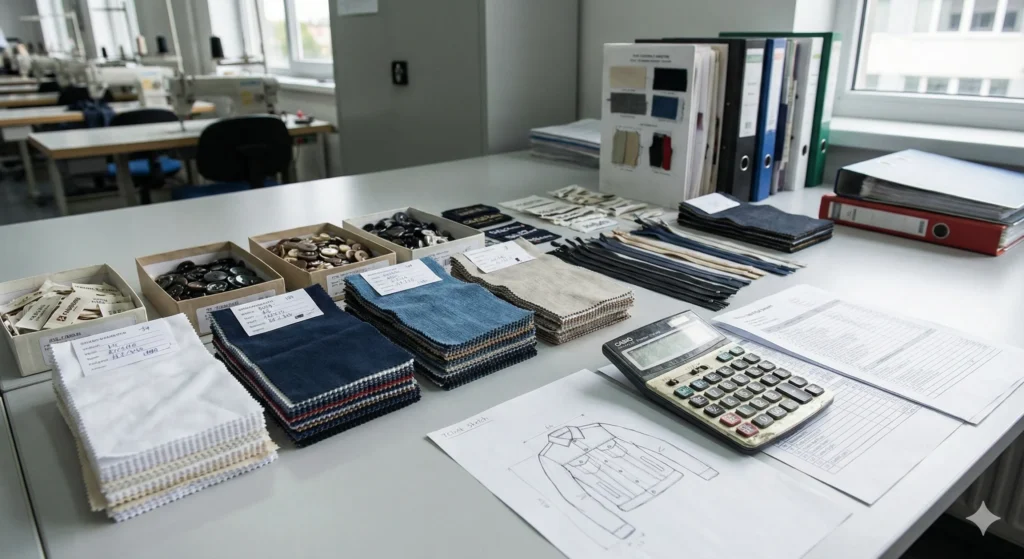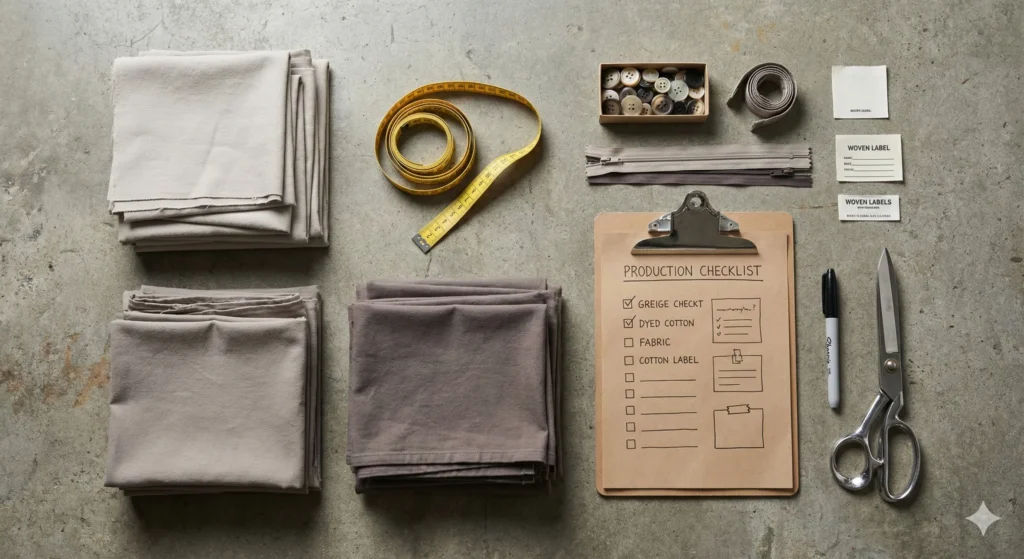Costing is a crucial process in the garment industry that involves determining the total cost of producing a garment. It is essential for setting the selling price, ensuring profitability, and making strategic business decisions. The costing process considers various factors such as material costs, labor costs, overheads, and other expenses. Understanding what is costing in the garment industry is fundamental for efficient financial management and pricing strategies.
Need accurate garment costing before you place a PO? If you’re working with custom cut-and-sew manufacturers in India, a clear costing framework helps you compare quotes correctly and protect your margin.
What Is Costing in the Garment Industry?
In simple terms, garment costing is the structured breakdown of all direct and indirect expenses required to manufacture a style—from fabric and trims to labor, finishing, packing, testing, compliance overheads, and shipping terms (FOB/CIF, etc.). For brands working with apparel manufacturers for men’s private label production, costing is the fastest way to spot gaps in a supplier quote (missing trims, under-estimated wastage, unrealistic SMV, unaccounted overheads, etc.).
Types of Costing in the Garment Industry

1) CMT Costing & CM Costing
CMT (Cut, Make, and Trim) costing involves calculating the costs associated with cutting the fabric, making (sewing/assembling) the garments, and adding trims (like buttons, zippers, and labels). CM (Cut and Make) costs focus specifically on the expenses related to cutting the fabric and making the garment, excluding trims.
2) Cost Per Minute Costing
Cost per minute is a method used to determine the cost of labor for producing a garment based on the time taken for each operation. It is calculated by dividing the total labor cost by the total production minutes available. This metric helps in understanding the efficiency of the production process and in setting accurate pricing.
3) Pre-Costing
This is an initial estimate prepared before bulk production begins. It includes approximate costs based on the preliminary design and sample requirements. Pre-costing helps decide whether to proceed with a design based on feasibility and estimated profitability.
4) Material Costing
This includes the cost of all materials required to produce the garment, such as fabrics, trims, buttons, zippers, labels, and packaging materials. Material costing ensures that all necessary components are accounted for in the total cost.
5) Labor Costing
Labor costing accounts for the wages paid to workers involved in production. It includes cutting, sewing, finishing, and related processes. Labor costs vary based on garment complexity and time required.
6) Overhead Costing
Overhead costs include all indirect costs associated with production, such as utilities, rent, equipment maintenance, compliance costs, and administrative expenses. These are allocated to each garment to get a more accurate total production cost.
7) Production Costing
This involves detailed costing of each step in the production process, from raw material procurement to final shipment. It includes direct and indirect costs associated with manufacturing.
8) Activity-Based Costing (ABC)
ABC assigns costs to products based on the activities required to produce them. This method helps identify and manage costs associated with each production activity, leading to more accurate product costing and pricing.

Related Guides (Recommended)
Why This Matters for Pricing and Profitability
Understanding these different costing methods helps garment manufacturers and apparel production teams manage expenses, set competitive prices, and maintain profitability. Effective costing ensures every production component is accounted for—leading to better financial planning, clearer negotiations, and fewer surprises during bulk manufacturing.
Sources
- Fibre2Fashion
- Fashion2Apparel
- Online Clothing Study


